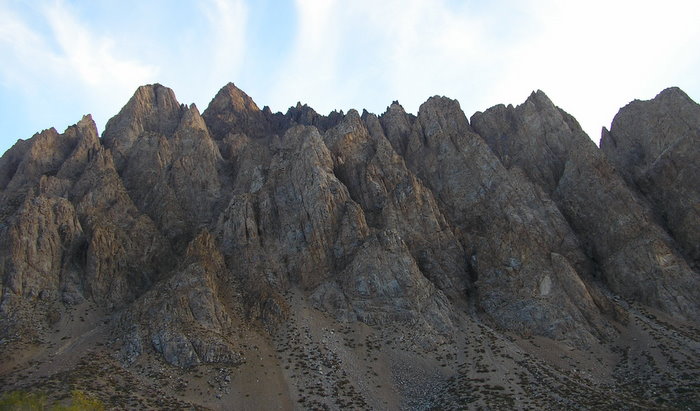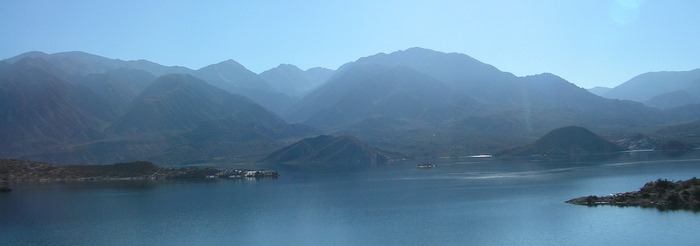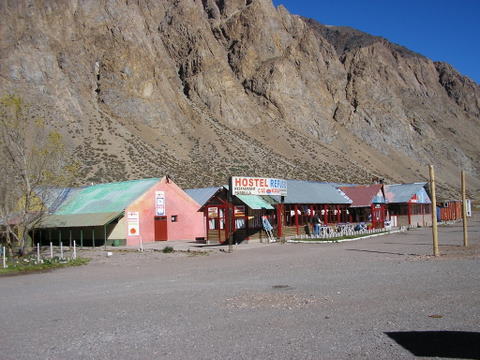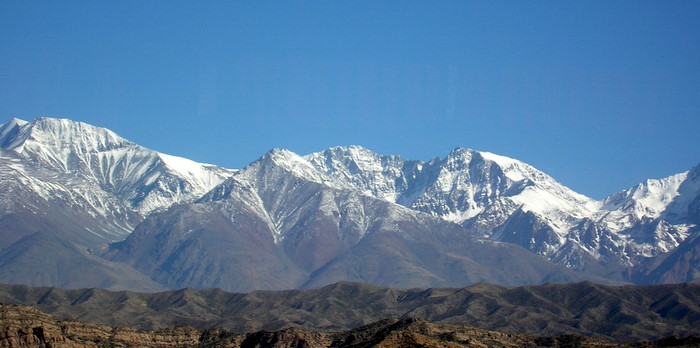|
Los PenitentesIn the shadow of Monte Aconcagua32°50'S. Lat. / 69°50'W. Long. Pop: 1,000 elev: 8,300’
(jagged peaks of Cerro Penitentes, 14,000')
Many images of mountain ranges conjure visions of lush forest-covered hill sides cut with rushing streams and roaming wildlife, but this is not the case with Argentina’s central Andes. As the bus makes its four hour journey from Mendoza’s dry, flat outskirts to the looming range, brown is the only color. Abruptly from the flat steppe at 2400 feet elevation, the bus climbs another 6,000 feet in two hours of twisting roads through multi-hued mineral laden mountains that form the Earth’s youngest, most tectonically violent range. In Autumn, the swift flowing rivers, perhaps 8 to 10 feet wide, lay in the middle of eroded flood plains, many times that width, and fill valley lakes. During the spring thaw, these river valleys will be wild torrents of water draining the melting snow of the Andes, filling the reservoirs on the steppe below to provide the irrigation for the agricultural economy of Mendoza Province. The wild life are there, but sparse and rarely in view. Treks through the mountains are eerily, and blissfully, silent.
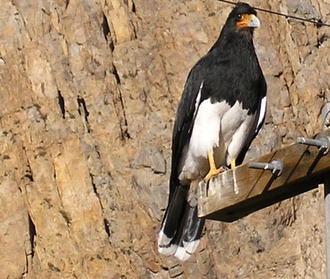
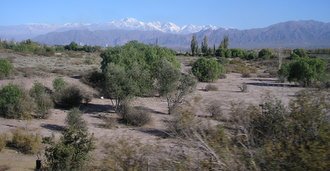
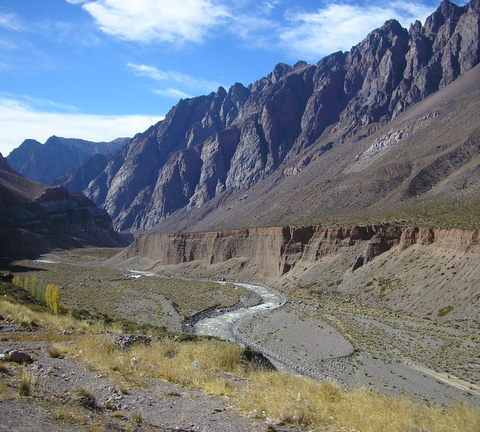
(a glacier fed lake at 5,000' on Route 7 to Los Penitentes)
The resort of Los Penitentes is an eclectic collection of a dozen hotels and a couple ramshackle hostels that line Route 7, the main commercial link between Mendoza and Santiago, Chile. Except for a brief period in summer, and then in winter, more 16-wheel tractor trailers than cars or busses traverse the route. But in the winter, Los Penitentes bustles with skiers. Los Penitentes is central Argentina’s main ski resort offering over 25 trails. It draws visitors from Chile as well as Argentina. In the summer it’s an important trekking center to explore the second highest mountain on Earth, the 23,000 foot Monte Aconcagua. Being the second tallest mountain does not make it the second most difficult. Experienced mountain climbers can scale its sides much easier than Everest or the much smaller Cerro FitzRoy and Cerro Torro in southern Patagonia. In Autumn, Los Penitentes is empty. Technically it has a permanent population of 1,000. If I saw more than three-dozen people during my two days, I may have counted the same people twice. I don’t regret spending two days in awesome peace and quiet, but I would not spend more at this time of year - especially with internet connections difficult and food selections monotonous. During the winter and summer seasons, the hotels offer pools, restaurants and clubs. Hotel Refugo Aconcagua was one of only three accommodations to remain open in Autumn. It is more like a hostel with rooms of mostly bunk beds, although each has a modern bath. Breakfast (the typical basic Argentine coffee/tea and bread with butter and jam) and dinner are included in the room rate. The food is basic and nothing to write home about. There is a pleasantly large fireplace in the main room which was kept burning all day since the central heat was not turned on - I was one of only 3 guests. The main room if filled with long tables and some lounge chairs and a bar. After a day of sking, it must be a friendly, lively place. The sign on Refugo Aconcagua uses the term "hostel" but when I booked on-line it was titled a "hotel." Kitchen facilities are not open to guests. The Hotel/hostel runs a cafe that remains open for dinner in-season. The rate included breakfast and dinner in a private room was AR$120 (US$33). 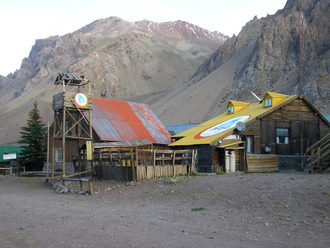
(the HI hostel)
(Hotel Refugo Aconcagua)
Puente de los Incas is even smaller. From the 1920’s until its destruction in a major flood in 1965, a spa utilizing the volcanic thermal sulfur springs put the town on the map with Argentina’s high society. Unfortunately for Puente de los Incas the spa was never rebuilt. The bridge (Puente) in the town’s name refers to a natural rock bridge formation that was incorporated as part of the spa. Today, the ruins are a tourist attraction for visitors to the skiing region due to the sulphur deposits that have created an otherworldly landscape. A craft market, of sorts, is the other attraction along with a few accommodations. Except for the fact that the settlement is only a few miles from the Chilean border on this major commercial link and, therefore, a fairly large military establishment is present, the area would have been abandoned after the flood. From Los Penitentes you can walk the 3 ½ miles to Puente de los Incas on the abandoned railroad track and have a very quiet hike, or you can take a taxi. The railroad tracks, some of the highest on earth, once connected Mendoza with Santiago, Chile.
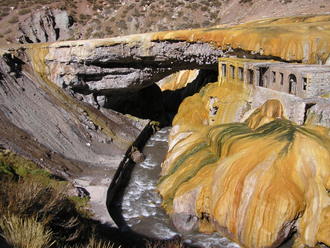
(La Puente del Inca) 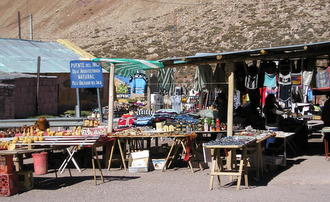
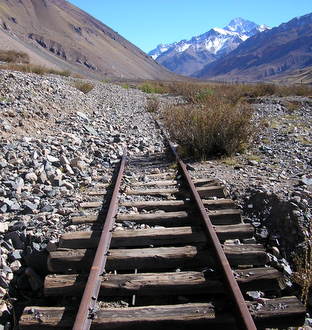
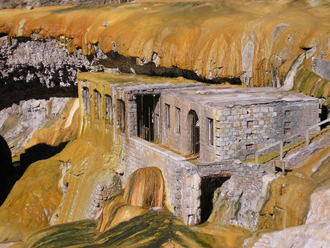
Route 7 follows an ancient pre-Inca road over the mountains. Today it's a direct link between Mendoza and Santiago, Chile. For the traveler this makes it conventient to stop at Los Penitentes, Punte de los Incas and Monte Aconcagua on their way to explore Chile.
|
